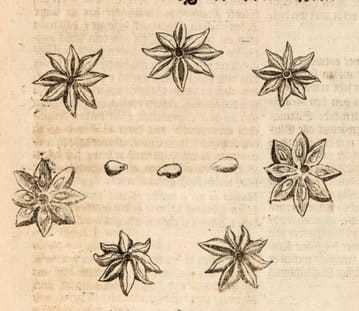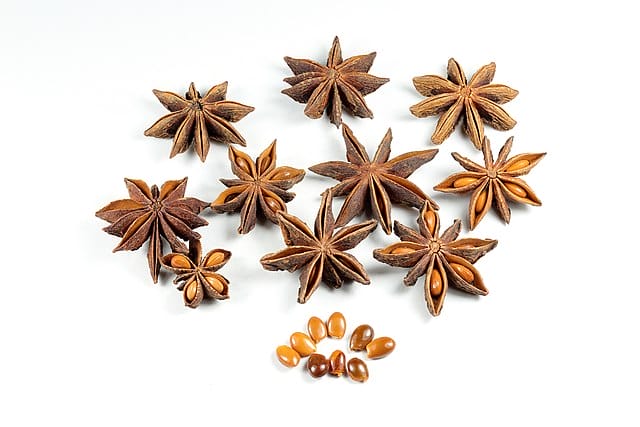Illicium, Star Anise, Da Hui Xiang 大茴香
Anisum StellatumDa Hui Xiang (TCM)
Badyan Khatai (Unani)
Icones Plantarum Medcio-oeconomico, Vietz, 1800–1806
 Museum Museorum, Valentini, 1704
Museum Museorum, Valentini, 1704 Star Anise fruit
Star Anise fruit(Photo by Sanjay Acharya) (Wikimedia)
Botanical name:
Illicium spp.:
- I. verum
- I. anisatum (Japanese Star Anise)
Parts used:
Fruit
Temperature & Taste:
Very Warm, dry. Pungent
Classification:
M. Warm to Expel Cold
Uses:
1. Moves Qi::
-Wind, colic, bloating
-spasmodic pain of the Stomach or Intestines
-Hernia
2. Clears Damp, Awakens the Spleen:
-indigestion, loose stool
-poor appetite (Commission E)
-Morning Sickness
3. Warms the Kidneys, Clears Wind-Damp:
-promotes Urine when obstructed by Cold or Damp
-Lower back pain from Cold Kidneys
-Rheumatism
-Paralysis
4. Clears Phlegm, Stops Cough:
-Cold Cough, Bronchitis (Commission E)
-Catarrh
5. Externally:
-distilled oil can be used topically for fungal infections
Dose:
Decoction: 3–9 grams
Powder: 500mg–3 grams
Substitute:
1. Fennel seed; Aniseed
Main Combinations:
In TCM it is often combined with Fennel, especially for cold pain of the lower abdomen, and for Hernia. Aniseed is of course also regularly combined with Fennel seed in the Western Tradition.
1. Catarrh, Gout, Pruritus, Sassafras with Sage, Nutmeg, Cinnamon, Star Anise
2. Fever, Menyanthes with Willow bark, Ceylon Cinnamon, Cinchona, Gentian, Star Anise
Cautions:
1. Not used in Deficient Heat
Main Preparations used:
Distilled Oil
